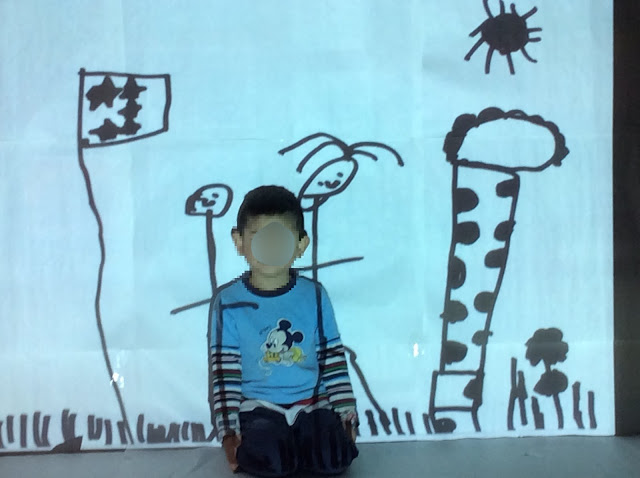Somewhere I Feel Calm, Quiet, & Safe: Visualization, Imagination, & Self-Regulation
This year, a lot of our learning about Self-Regulation and Well-Being has been focused on different energy levels our bodies may feel throughout a school day – calm, energized, or somewhere in between. A blog post about what led us to this point can be found here: http://wideeyesandwonder.blogspot.ca/2017/02/calm-energized-or-somewhere-in-between.html
As noted in previous blog entries, our classroom community has taken part in discussions about what areas
of our day may be more successful when we feel energized and alert, and what
areas of our day may be more successful when we feel calm and quiet. Since that point, we have been building strategies we can use to take us from one energy state to
another (i.e. calming our bodies down before a transitional time, getting our
brains alert before a small group literacy lesson). One such strategy we
typically use after our pre-lunch dance party to calm our bodies down before
our walk to the lunch room is to lay on our backs, close our eyes, listen to
the rainstick, and imagine a place that makes us feel calm, quiet, and safe.
Usually after a few minutes of this visualization and deep breathing, students
slowly sit up and share the place they were imagining. Students have responded
well to this strategy and educators have noticed their emerging ability to
self-regulate their energy states when needed.
With this in mind, we saw
natural connections from this calming visualization strategy to our on-going
self-portrait project. Rather than draw themselves, we challenged students to
draw the calm, quiet, and safe place they saw in their imagination. Studying
landscapes in art helped us to learn how we could be successful in our
drawings. Another focus was to look deep into our imagination and add all the
details we could see. Many students reflected on their initial try and chose to
try again to improve their work.
From here, each student’s unique landscape was photographed and then projected onto our classroom wall using a digital projector. This allowed students to “step into their world” – by placing themselves in front of the projection, it was as if they had entered the world of their imagination. Each student chose an expression and pose that felt right to them and was photographed by an educator. We feel that the final product creates a tangible and visible representation of student thinking around our “calm, quiet, and safe” visualization. Every student’s unique ideas come through in their work in a striking and very special way, and we hope these visuals will assist students in their emerging learning around self-regulation.
From here, each student’s unique landscape was photographed and then projected onto our classroom wall using a digital projector. This allowed students to “step into their world” – by placing themselves in front of the projection, it was as if they had entered the world of their imagination. Each student chose an expression and pose that felt right to them and was photographed by an educator. We feel that the final product creates a tangible and visible representation of student thinking around our “calm, quiet, and safe” visualization. Every student’s unique ideas come through in their work in a striking and very special way, and we hope these visuals will assist students in their emerging learning around self-regulation.
A few examples below...with faces blurred for privacy. More examples can be found on our shared classroom Twitter (@IPSKindergarten) or my professional learning network account (@JoelSeaman).


"I'm laying in the grass and it's raining. I can feel the rain dripping on me"
"I'm in a calm rainforest with so many trees and I'm looking at every one"
"I'm in China with my Mom and Dad"
"I'm in a nice, quiet cave"
"In India with my baby sister"
"At home smelling a flower"
"Under the water with Mommy and some fish"
"In a tree where nobody can get me except Mom and Dad"
"I'm on a beach listening to a coconut dripping water"
"Hey! That's me!"
Connections
to the Kindergarten Program:
Belonging and Contributing:
communicate their thoughts and feelings through various art forms, demonstrate
a sense of identity and positive self-image
Self-Regulation and Well-Being:
demonstrate independence, self-regulation, and a willingness to take
responsibility in learning and other endeavours, demonstrate an awareness of
their own health and well-being
Demonstrating Literacy and Mathematics
Behaviours: communicate with others in a variety of
ways, for a variety of purposes, and in a variety of contexts
Problem Solving and Innovating:
use problem-solving strategies, on their own and with others, when experimenting
with the skills, materials, processes, and techniques used in drama, dance,
music, and visual arts














No comments:
Post a Comment